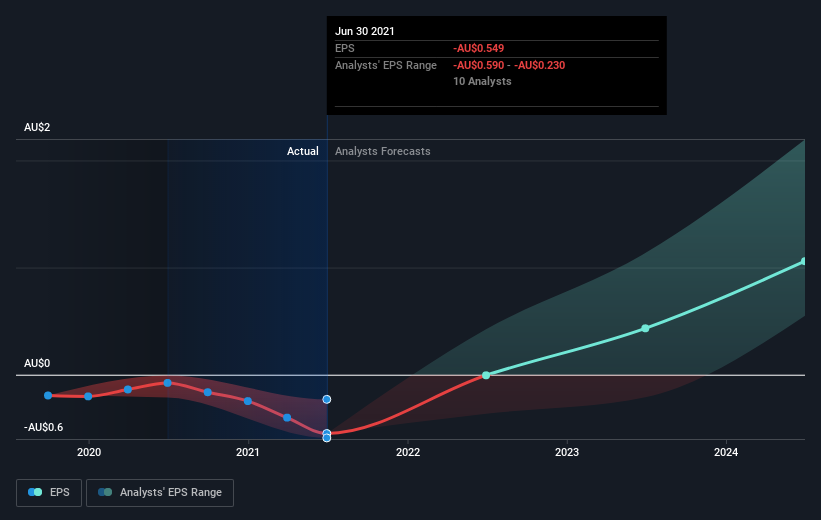Afterpay Limited (ASX:APT): When Will It Breakeven?
With the business potentially at an important milestone, we thought we'd take a closer look at Afterpay Limited's (ASX:APT) future prospects. Afterpay Limited, together with its subsidiaries, provides payments solutions to customers, merchants, and businesses. On 30 June 2021, the AU$35b market-cap company posted a loss of AU$156m for its most recent financial year. Many investors are wondering about the rate at which Afterpay will turn a profit, with the big question being “when will the company breakeven?” We've put together a brief outline of industry analyst expectations for the company, its year of breakeven and its implied growth rate.
Check out our latest analysis for Afterpay
According to the 13 industry analysts covering Afterpay, the consensus is that breakeven is near. They anticipate the company to incur a final loss in 2022, before generating positive profits of AU$100m in 2023. The company is therefore projected to breakeven around 2 years from now. How fast will the company have to grow each year in order to reach the breakeven point by 2023? Working backwards from analyst estimates, it turns out that they expect the company to grow 56% year-on-year, on average, which signals high confidence from analysts. Should the business grow at a slower rate, it will become profitable at a later date than expected.
Underlying developments driving Afterpay's growth isn’t the focus of this broad overview, but, take into account that generally a high forecast growth rate is not unusual for a company that is currently undergoing an investment period.
One thing we would like to bring into light with Afterpay is its relatively high level of debt. Typically, debt shouldn’t exceed 40% of your equity, which in Afterpay's case is 99%. A higher level of debt requires more stringent capital management which increases the risk in investing in the loss-making company.
Next Steps:
There are key fundamentals of Afterpay which are not covered in this article, but we must stress again that this is merely a basic overview. For a more comprehensive look at Afterpay, take a look at Afterpay's company page on Simply Wall St. We've also put together a list of pertinent aspects you should further examine:
Historical Track Record: What has Afterpay's performance been like over the past? Go into more detail in the past track record analysis and take a look at the free visual representations of our analysis for more clarity.
Management Team: An experienced management team on the helm increases our confidence in the business – take a look at who sits on Afterpay's board and the CEO’s background.
Other High-Performing Stocks: Are there other stocks that provide better prospects with proven track records? Explore our free list of these great stocks here.
This article by Simply Wall St is general in nature. We provide commentary based on historical data and analyst forecasts only using an unbiased methodology and our articles are not intended to be financial advice. It does not constitute a recommendation to buy or sell any stock, and does not take account of your objectives, or your financial situation. We aim to bring you long-term focused analysis driven by fundamental data. Note that our analysis may not factor in the latest price-sensitive company announcements or qualitative material. Simply Wall St has no position in any stocks mentioned.
Have feedback on this article? Concerned about the content? Get in touch with us directly. Alternatively, email editorial-team (at) simplywallst.com.

 Yahoo Finance
Yahoo Finance 
